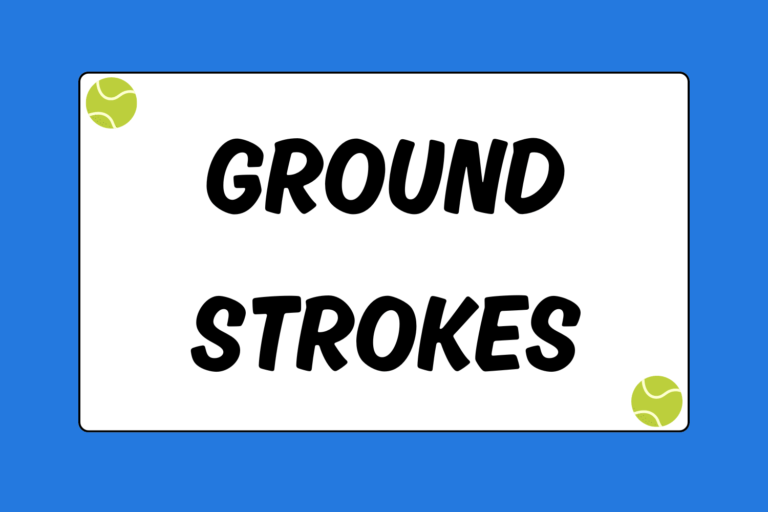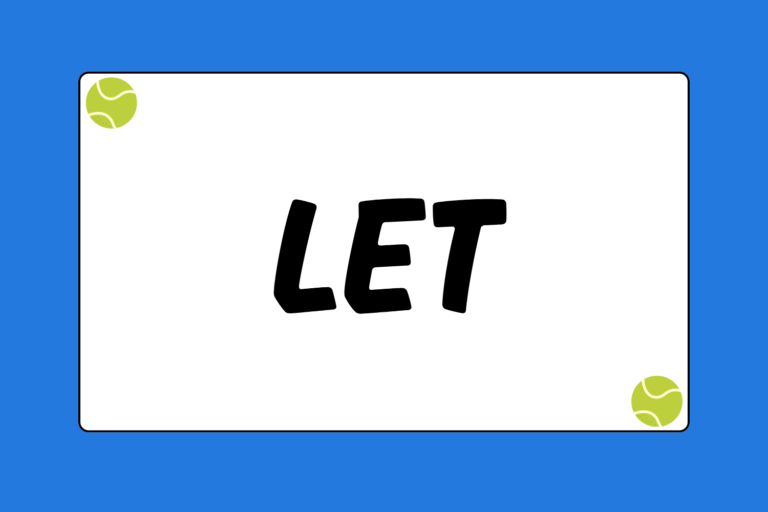Let’s face it, you want to be able to hit like the tennis pros. You want Roger Federer’s forehand, but can’t seem to figure out how to copy his stroke and, most importantly, how to consistently pull it off during a practice session or match. Most tennis players who are just getting started have difficulty with the forehand groundstroke because there simply isn’t a “best” way to hit a tennis ball, let alone a single stroke.
Coaches or instructors have different approaches to teaching the forehand. To make learning the basic forehand groundstroke easier and less technical, this guide aims to simplify the stroke and point out the basic components that every forehand should have. The forehand, in particular, sees the most variation amongst all tennis strokes. This is due to the free range of motion that comes when swinging the racquet.
To break down the forehand into simpler steps and get you a notch (among many) closer to Federer status, this guide covers the basics of a forehand, and what you need to know regarding which grip to use, the preparation for the stroke, the swing, the footwork and the follow through.
Gripping the Racquet
Anyone can pick up a racquet and start swinging. However, in terms of building a consistent swing, it is important to pick a grip that is comfortable and suitable to your style of play. There are traditionally four grips to decide from when hitting a forehand: The Continental, the Eastern, the Semi-Western and the Western grip.
The Eastern grip is most commonly taught to beginners and generally provides a more natural, less-complicated swing. If you are taking a lesson for the first time, ask the coach or instructor to describe the traditional grips, so you can find which one is comfortable and natural for you. For more information grip styles, refer to the guide “How to Grip a Tennis Racquet.”
Top 5 Forehands & Grips in Men’s Tennis
- Roger Federer … Eastern Forehand
- Rafael Nadal … Western
- Andy Murray … Mix between Eastern Grip and Semi-Western
- Novak Djokovic … Western
- Andy Roddick … Semi-Western
Technique for the Basic Forehand
Step 1: Preparation
With your grip already selected, the first step to hitting the basic forehand is to prepare for the stroke. Preparation in tennis generally refers to getting into the ready position. The ready position is achieved by doing the following:
- Maintaining a good base with feet wider than the hips.
- Keeping a low center of gravity with the hips low and knees bent.
- Keeping the arms bent.
Step 2: Approaching the Ball
In your ready position you are free to move with relative ease once the ball is struck by your opponent. In this step, the goal is to be able to get to the ball as soon as possible and give you time to set your feet. As you move, turn both of your hands towards the ball. This allows for your shoulders and upper body to turn away from the ball. This is also what generates power for the stroke.
Step 3: Bring the Racquet Back
As you begin to take the racquet back, pivot your feet to the right. If left-handed, reverse these instructions. Look to take the racquet back in a loop.
Hot Tip: Point at the Ball
When bringing the racquet back before contact, use your other hand to point at the ball. Pointing at the ball allows you to determine your position in terms of distance from the ball, and also lets you focus your eyes on the object you are hitting.
Step 4: Make Contact
When hitting a forehand, it is important to keep the position of your arm, your body, and the distance you are from the ball consistent. Follow these steps to help establish a consistent forehand swing:
- Provide acceleration of the racquet into contact with the ball. The aim is to come into contact with the ball when it is at waist height.
- Provide power to the stroke by firing all muscles into the stroke. Start with the legs, and then add the hips, then your shoulders, then your arm, and finally your wrist.
- Have your body weight leaning towards the net and into the ball, while also stretching your arm through the shot.
Step 5: The Follow Through
The follow through is just as important as the stroke itself. Without a proper follow through, the ability to control your forehand will be limited and you will not be prepared for the next shot. The proper follow through is executed by:
- Following through with your racquet until it reaches your opposite shoulder.
- Having the racquet reach your opposite shoulder, your body rotates naturally so that you are facing the court and ready for your next shot.
Practice the Perfect Forehand
If you have selected a grip, and followed the steps outlined in this guide, you should have a good sense of how the stroke is broken down. Now it is time to go out and practice what you have read. Practice makes perfect, and the quickest way to learn a new stroke is through repetition. Get out on the court and follow the five steps outlined in this guide to establish the basic forehand in your tennis game.





